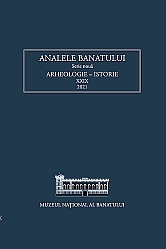Noi observații în legătură cu topografia sitului arheologic de la Tibiscum-Jupa (jud. Caraș-Severin)
New data about the topography of the archaeological site Tibiscum-Jupa (Caraș-Severin County)
Author(s): Michal Pisz, Agnieszka Tomas, Călin TimocSubject(s): Archaeology, Military history, Ancient World
Published by: Editura Mega Print SRL
Keywords: roman fort; vicus; Roman Dacia; non-destructive archaeology; lanscape archaeology; municipium; ;
Summary/Abstract: Tibiscum is one of the biggest Roman auxiliary forts in Dacia and one of the most interesting sites of this kind. It comprises a military fort with its civil settlement and the remains of other structures related to them. The environment around Tibiscum makes it interesting also from the geological point of view. The Timiş River flowing along the fort changed its riverbed regularly in the past, causing troubles to the inhabitants and now to the archaeologists. The broader area around Tibiscum has been only partly researched and still awaits further investigations. The goal of our two-year research was a better understanding of the ancient landscape around Tibiscum and a spatial allocation of settlements and infrastructure. A set of various methods has been implemented to cover the largest area available for the surveys without using excavation methods. Non-destructive survey allowed to collect data which led to the new conclusions about the settlement complex. Following the analysed surveys, new roads were discovered, the necropolis area of the municipium Septimium Tibiscensium, new areas inhabited around the fortification, and especially the parts of the archaeological site that were destroyed by the floods and fluctuations of the river Timiș could be established.
Journal: Analele Banatului S.N. Arheologie-Istorie
- Issue Year: XXIX/2021
- Issue No: 1
- Page Range: 163-185
- Page Count: 23
- Language: Romanian

